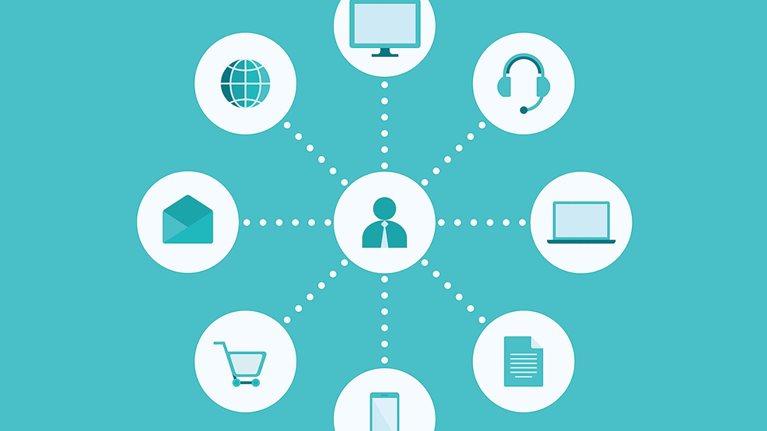Today’s consumers are the ultimate surfers, hopping between channels, devices, and sites as they shop. Loyalty programs are static by comparison, relying on increasingly outdated rewards and the redemption strategies of the past.
To create loyalty programs as dynamic as their consumers, companies need to develop an underlying consumer-loyalty strategy built around a fluid partnership of products, services, and experiences. We expect some brands to go even further, pursuing partnerships as a new way to compete. That means multiple companies from different sectors will develop a joint loyalty program around a unifying customer value proposition.
We see early signs of this happening already. Of the Financial Times’ top 25 brands of 2019, more than 40 percent have partnered with at least one other consumer brand to improve the customer experience and drive increased engagement. Indeed, as industry boundaries continue to blur, consumer and loyalty strategy will require a broader frame of reference.
Benefits of this approach include a deeper understanding of customer behavior through richer data. Ecosystem-centric loyalty programs are still in their nascent stages, but they will become increasingly prominent as consumer brands realize the need to compete at scale. And the value at stake is significant. Top-performing loyalty programs show a significantly higher success rate at changing customer behavior to drive value, and they have brands that are more likely to be preferred by customers (Exhibit 1).

Despite the opportunities, many loyalty programs have plenty of room to grow. We looked at a basket of 50 loyalty programs from top brands and found that just 18 percent have experience-led programs, 6 percent have connected offerings, and 2 percent have ecosystem offerings (Exhibit 2).

We see three important phases as companies evolve to next-generation loyalty programs:
Phase 1: From rewards and redemption to experience and content
“Earn and burn,” or pure discount-based programs, are no longer enough. Consumers are looking for something more. When it comes to loyalty rewards, it’s no longer just about the transaction at point of purchase; it’s about additional experiences and services that create new touchpoints. Companies are pursuing content and experiences to drive up engagement and get consumers more connected with the brand on a daily or weekly basis. Programs that balance monetary rewards with experiential offerings (exclusive events, early access, unique discoveries or adventures) can provide value beyond the transaction by appealing to the consumer’s head and heart (Exhibit 3).

Phase 2: From siloed programs to connected offerings
Given the shift toward experience and content, brands are tapping into their complementary product and service offerings to create their own brand ecosystem. These brands are looking across all they can offer to their customers to tie together both commerce and noncommerce moments.
As consumer brands increase their ability to leverage scale, data, and technology to create this connected offering, brands will continue to migrate toward smarter programs where personalized, “underwater” tactics are at the center of value creation, in which case published loyalty benefits will represent only a fraction of the total consumer value. The consumer engagement model will look to increase touch frequency and move into other areas of the ecosystem, such as credit cards or subscriptions.
There is at least one model of a connected loyalty offering on the market today: Amazon Prime. Prime serves as a loyalty ecosystem, serving the currency of on-demand convenience across sub-brands that include Amazon’s dot-com business, Prime Video, Prime Now, Whole Foods, and others.
Would you like to learn more about our Marketing & Sales Practice?
Phase 3: From company focused to ecosystem enabled
Even as companies move toward connected offerings, it will be hard for any one player to replicate the size and scale of an ecosystem like Prime’s in any one sector, let alone across sectors. As a result, companies will need to think creatively and strategically about partnerships across categories, including with would-be competitors.
Brands should look to strategic partnerships to provide consumers with more holistic experiences tailored to individual consumer lifestyles and ecosystems. Loyalty is a fitting platform for these sorts of partnerships, enabling a disparate set of brands to craft a coherent set of benefits that feel personally relevant to the consumer. Likewise, it offers a host of benefits for member brands: broader access to consumer data, cross-marketing opportunities for customer acquisition and engagement, and economies of scale stemming from shared IT infrastructure.
At the same time, brands must be open to the trade-offs inherent in an ecosystem-based loyalty partnership. Ecosystem-centric loyalty may require companies to partner with previous indirect competitors, giving rise to “frenemy” relationships across regions and channels. In contrast to loyalty coalitions, which were largely operated by third-party organizations, ecosystems are more likely to arise organically as companies forge strategic partnerships, placing the onus on the brands to govern their partnership’s strategy and architecture. (See sidebar, “Coalition loyalty programs are challenging.”) Nevertheless, if executed properly, brands stand to gain more from ecosystem-centric loyalty than they lose.

No customer left behind: How to drive growth by putting personalization at the center of your marketing
What this means
As brands begin to partner around ecosystems, what changes will these partnerships herald for the brands’ pre-established, stand-alone loyalty programs? In the near term, we expect standalone programs will continue to operate beside or within the ecosystem, much as individual airline loyalty programs can function independently while also yielding benefits across an alliance with other airlines. However, as ecosystems grow more conventional and their value becomes more apparent to brands, we envision that stand-alone programs may begin to consolidate under single-flagship ecosystem loyalty programs, or that stand-alone programs may evolve into ecosystems as they incorporate partnerships as part of the core program value proposition.
As we shift into the era of ecosystem-driven loyalty, brands must learn from the failures of the coalitions of old. To succeed, a loyalty ecosystem should be centered around the following seven design principles:
- Shared consumer in mind: The program must be highly personalized to the individual consumer, leveraging the full stack of consumer data across brands to offer personalized messages, offers, and experiences. Furthermore, brands should mutually understand the value of the consumer.
- Brand synergy: The program must be structured to elevate brand equity. Every brand must have an important role in the given ecosystem and provide value to that ecosystem through its products and/or services.
- Diversity of products and services: The program must provide consumers with value through tangible goods, services, or experiences in order to reinforce the program’s underlying appeal. Brands should develop common features and benefits together.
- Seamless consumer experience: Sign-ups, use, and redemption must be intuitive and responsive, keeping the program simple for consumers.
- All-in brand commitment: Companies must be willing to commit to the partnership, allocating adequate marketing spend and having clear agreements about sharing consumer data in a way that adheres to all relevant regulations.
- Alignment on governance process: Brands should enter the partnership with aligned strategies and goals, defined roles and responsibilities, and a process for managing risk effectively.
- Data and tech focused on connectivity: Brands will need to ensure, within the confines of the shifting regulatory landscape, that their data can be exported or used as needed—for example, through the use of application programming interfaces (APIs). Brands within the ecosystem need to commit to standards and processes for tracking key performance indicators, adhering to regulations, and establishing protocols for connecting technologies and sharing data.
As ecosystem-centric loyalty flourishes, all parties stand to gain. Consumers will receive heightened experiential benefits in addition to faster loyalty rewards growth, more-flexible redemptions, and an unmatched simplicity and daily relevance. Brands will see a rise in reach and frequency of usage. In addition, they will gain access to richer, more privileged consumer data, shared infrastructure, and cross-marketing opportunities. Finally, ecosystem-centric loyalty will provide hitherto unseen competition to today’s retail goliaths, a benefit that will trickle down to the consumer brands and, ultimately, back to the consumer.
Ecosystems are here to stay. It’s time for all consumer brands to start thinking about how they can participate in one. Ecosystem-centric loyalty is a start.


